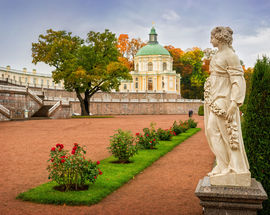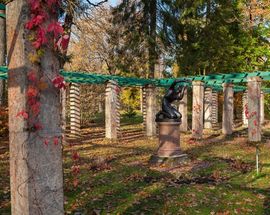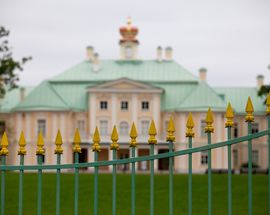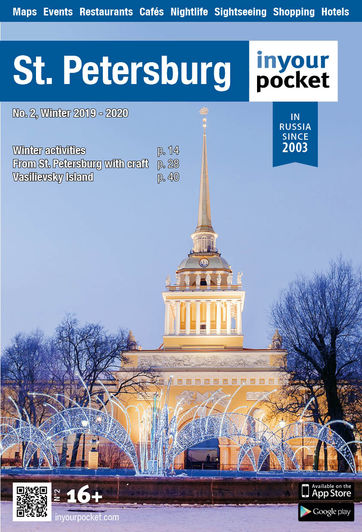In 1743, some years following Menshikov’s death, Empress Elizabeth presented the estate to her nephew, the future Peter III, who made Oranienbaum his official summer residence. Antonio Rinaldi, the Italian-born architect who also designed the Grand Palace at Gatchina and the Marble Palace in St. Petersburg, was commissioned by Peter in 1758 to build a modest stone palace next to the fortress, and this has survived till this day.
After Peter III was deposed, Catherine the Great made it one of her holiday spots and commissioned Rinaldi to build a small Chinese palace in the Upper Park with baroque on the outside and rococo within. Unfortunately, Catherine spent little time at Oranienbaum and eventually even grew to hate it during her marriage to Peter, and by the end of the 18th century the estate had been turned into a Naval Cadet College. Oranienbaum once again became an Imperial residence during the reign of Alexander I, retaining this status all the way up until the Russian Revolution in 1917. After the Bolsheviks came to power, Oranienbaum was immediately transformed into a museum and opened to the public.
Although never captured by the Germans, Oranienbaum was bombarded during the war. While the Grand Menshikov Palace survived intact, its restoration was not as high on the agenda as the more famous estates at Peterhof and Tsarskoe Selo. Today, this elegant little park has been almost completely restored, giving a unique insight into the lives of Russia’s Imperial family virtually since the founding of St. Petersburg itself. The Palace ensemble is on the list of UNESCO World Heritage Sites.








Comments